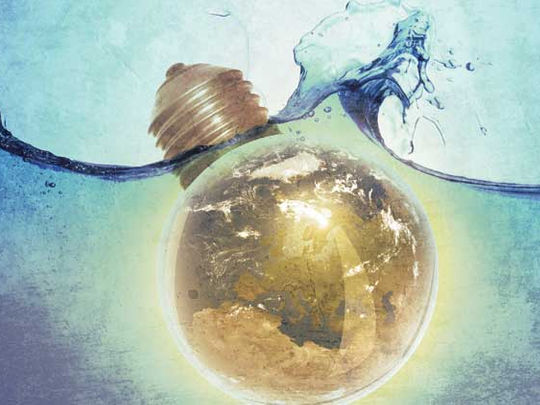
The world is already consuming natural resources at a mostly unsustainable pace to satisfy our needs for drinking water, food, shelter, energy and manufacturing. In the light of expected population growth from seven billion today to nine billion by 2050, the chances are that we will use and consume ever more resources, which are in limited supply on Earth. Economic growth and increasing standards of living in developing and emerging countries and the pressures associated with the impacts of climate change make the picture even more alarming.
Energy security and water issues especially have received significant attention in the past decade. Water and energy are both drivers and inhibitors of economic growth and improvement of human health and well-being. However, decision and policymakers often fail to recognise the interdependencies between the two, sometimes leading to situations where securing one puts the other at risk.
The water and energy challenge is manifold. On the one hand, the world needs to provide adequate and sustainable access to the more than 1.3 billion people who still lack electricity and to the more than 700 million people who lack an improved water supply today — which basically means lifting the “bottom billion” out of poverty. On the other hand, to keep up with the growing demand for both water and energy associated with population growth, rapid urbanisation and economic development in a context of increased scarcity of natural resources, pollution, degraded ecosystems, climate change and regulation of greenhouse gas emissions.
In 2010, energy production was responsible for 15 per cent of the world’s total freshwater withdrawals. Water demand for energy will certainly increase as energy demand itself is expected to increase by more than one third by 2035. China, for example, aims to produce 12 million metric tonnes of biodiesel by 2020, which will require an amount of water approximately equivalent to the annual discharge of the Yellow River.
The growing demand for finite water resources is leading to increased competition between the energy sector and other water-using sectors of the economy, principally agriculture and industry. In the past decade, severe episodes of droughts, heat waves and local water shortages have interrupted electricity generation all around the world, with serious economic consequences. At the same time, limitations on energy availability constrain the delivery of water services.
Members of the Gulf Cooperation Council are among the poorest countries in terms of water sources, but they consume water at rates that are among the highest in the world — thanks to desalination. There are currently more than 16,000 desalination plants worldwide, with a total global operating capacity of roughly 70 million cubic metres per day. Desalination is the most energy-intensive water treatment technology. The energy cost of treating low salinity seawater is about ten times greater than a typical freshwater source and about double the energy cost of treating wastewater for reuse. In this respect, the International Desalination Association has a goal of achieving a 20 per cent energy reduction by 2015 and some companies have started to experiment using renewable energy for desalination.
In the Arab region, solar energy investments are increasing for desalination and the creation of green industries, as the region receives about 300 sunny days per year. For example, the solar energy-powered water desalination plant in Khafji, Saudi Arabia, has a production capacity of 30,000 cubic metres per day. Solar energy-powered plants exist in Egypt, the UAE and elsewhere in the Gulf region. For instance, the Government of Qatar has set the goal to meet 80 per cent of its freshwater needs through a solar-powered water desalination plant.
An array of opportunities also exists to coproduce energy and water and to exploit the benefits of synergies, such as combined power and desalination plants, combined heat and power plants, using alternative water sources for thermal power plant cooling and even energy recovery from sewage. For example, the As-Samra wastewater treatment plant in Amman, Jordan, is almost self-sufficient and generates up to 95 per cent of its electrical consumption from renewable sources produced on-site through a system of turbines installed to run on upstream wastewater flow to generate hydraulic energy and through biogas captured from the sludge digesters and recovered in the form of electrical and thermal energy.
The United Nations are also addressing the energy and water challenges. In this framework, the World Water Day 2014 campaign is dedicated to ‘Water and Energy’ and the upcoming World Water Development Report, to be released on World Water Day in March 2014, addresses the theme of ‘Water and Energy’ and seeks to inform decision-makers, stakeholders and practitioners about the water and energy inter-linkages, potential synergies and trade-offs. The Report highlights the need for compatible and coherent national energy and water policies. Climate change mitigation policies are a particularly emblematic example as efforts to reduce greenhouse gas emissions through hydropower or biofuels may place greater pressure on water resources and development of new water sources through desalination may imperil national emissions targets.
As we can see, the water and energy nexus presents significant opportunities for both the water and energy sectors. However, these opportunities can be harnessed only if policymakers, planners and practitioners in both sectors take the necessary steps towards increased collaboration and coordination. The World Water Day and the World Water Development Report 2014 are intended to be steps in that direction.
Michel Jarraud is Chair of UN-Water.








